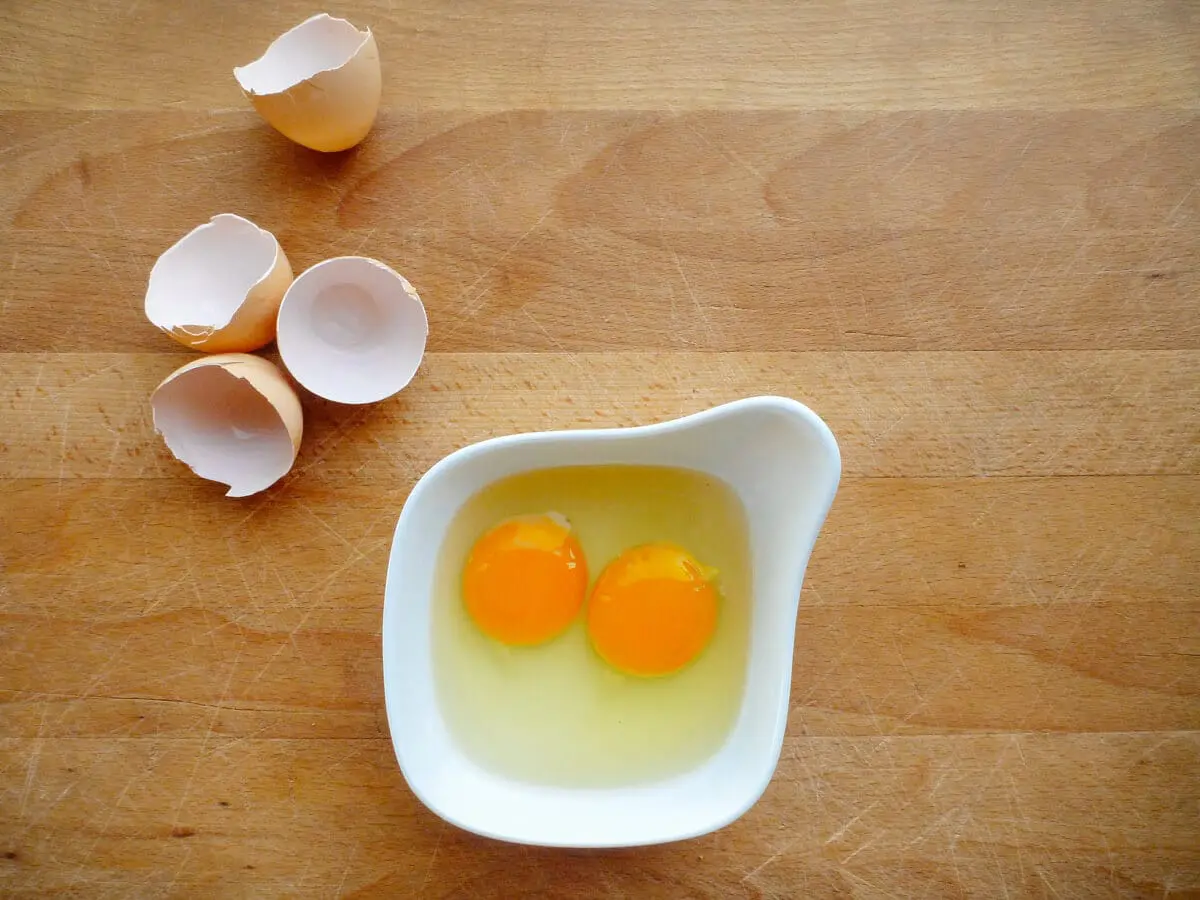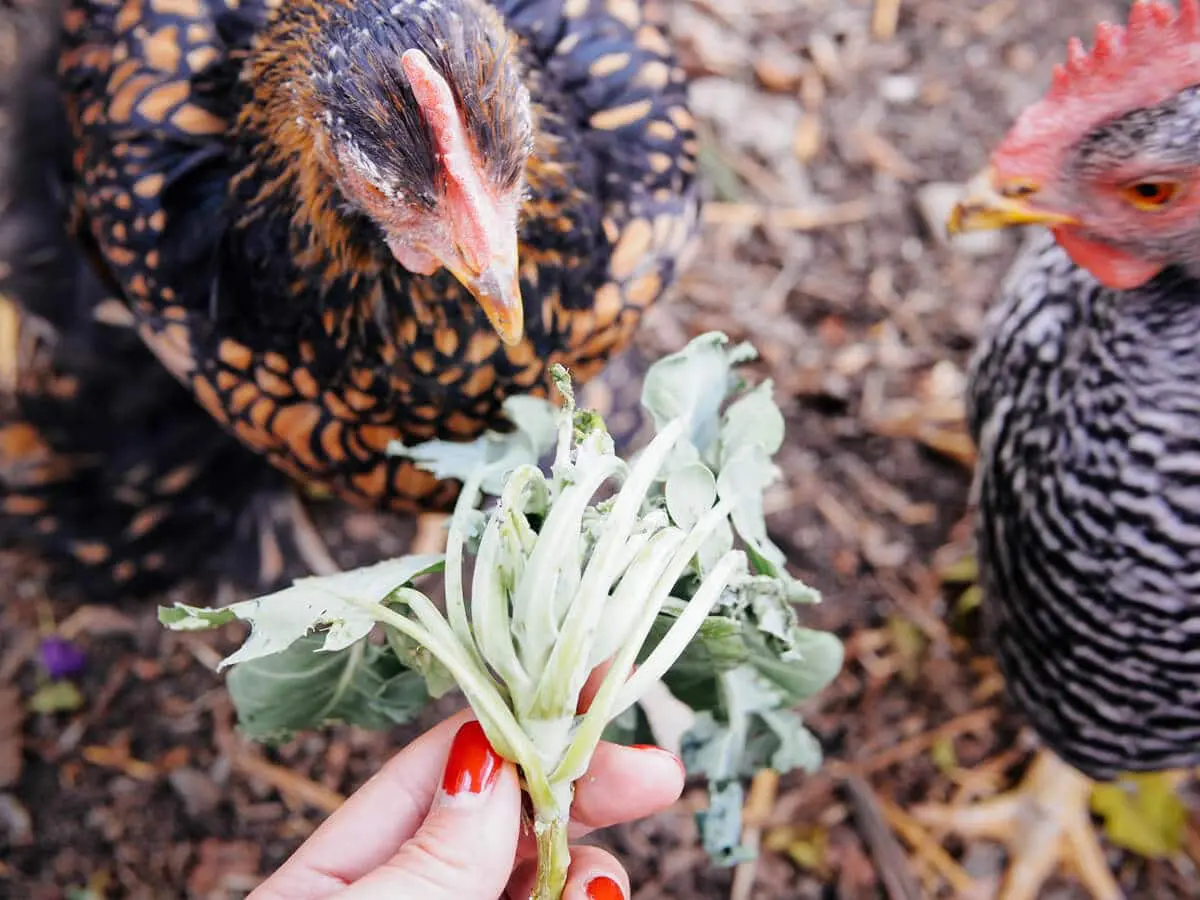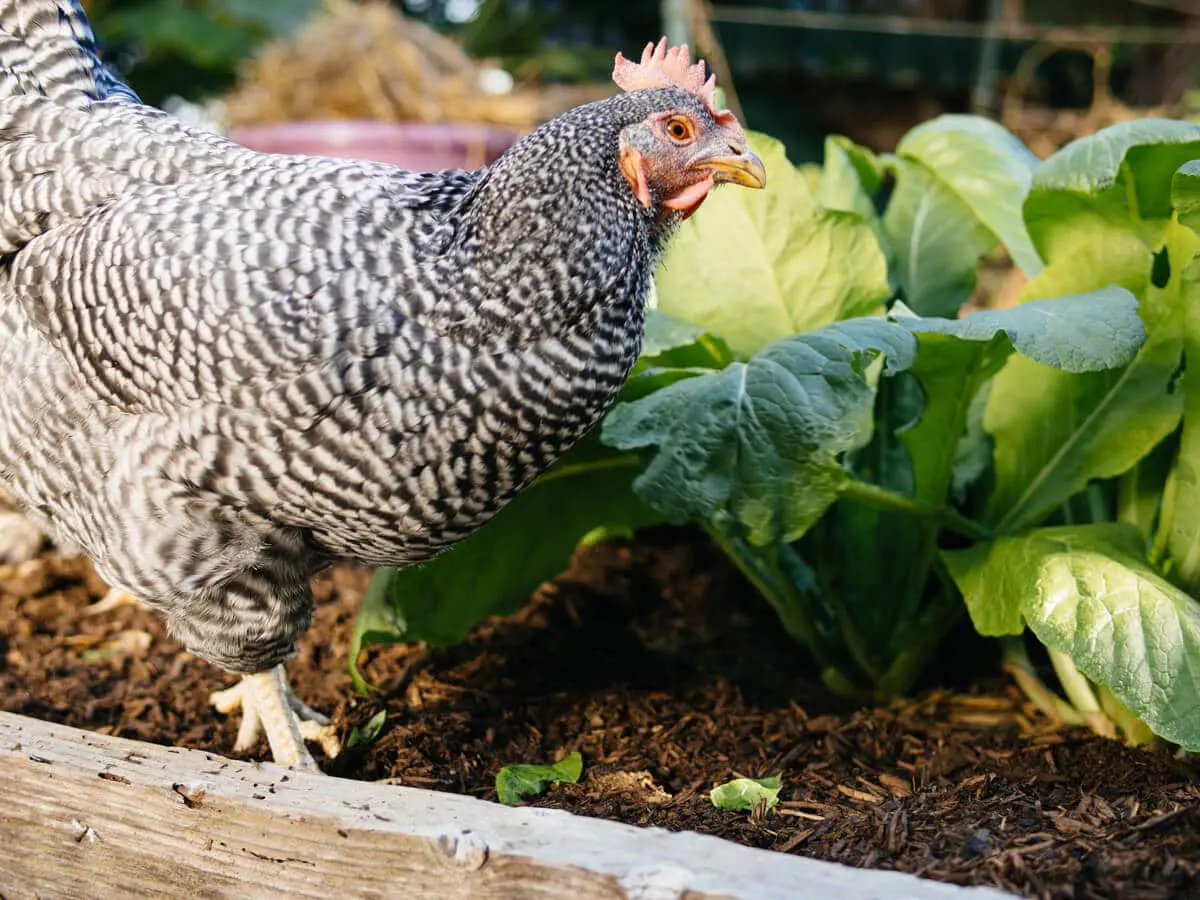If you’re a chicken farmer looking to achieve the best possible egg quality, then you need to know the secret to having healthier, richer-colored yolks. Yolk color is an important indicator of the quality of eggs, and is determined by the type of feed given to the chickens. By understanding the dietary needs of chickens, you can improve the yolk color of your eggs and increase the overall health of your flock.
What is the Color of Egg Yolks?

Egg Yolk Color Depends on the Chicken’s Diet
- The color of egg yolks varies from pale yellow to dark orange, depending on the type of food the chicken eats.
- Chickens raised on a diet rich in yellow and orange fruits and vegetables, such as carrots and sweet potatoes, will produce yolks with a deep orange-yellow color.
- Feeding chickens a diet of green vegetables, such as spinach, kale and broccoli, will produce lighter-colored yolks.
- The color of an egg yolk also depends on the age of the hen. Young hens, whose livers are not yet fully developed, will produce paler yolks.
- The color of an egg yolk also reflects the hen’s overall health. A hen that is healthy and well-nourished will produce richer, deeper-colored yolks.
The Benefits of Healthier, Richer-Colored Yolks
- Egg yolks with a richer, darker color are healthier and more nutritious than paler yolks.
- The carotenoids in the yolks are powerful antioxidants that can help protect against chronic diseases such as cancer and heart disease.
- Egg yolks with a richer color can also help boost the immune system and improve vision.
- Egg yolks with a richer color are also more flavorful and a better source of protein than paler yolks.
Tips for Increasing the Color of Egg Yolks
- Feed chickens a diet rich in yellow and orange fruits and vegetables.
- Add a supplement of carotenoids to the chicken feed to increase the color of the yolks.
- Provide the chickens with plenty of access to natural sunlight.
- Keep the chickens healthy and well-nourished.
Discover the Secret to Having Healthier, Richer-Colored Yolks in Your Chicken Husbandry
By following the tips above, you can produce healthier, richer-colored egg yolks in your chicken husbandry. With a diet rich in carotenoids and plenty of access to natural sunlight, you can increase the color of your egg yolks and enjoy the health benefits that come with it.
Different Types of Egg Yolk Colors

Yellow Egg Yolks
Yellow egg yolks are the most common type of egg yolks. They are produced by chickens that are fed diets high in carotenoids, which are natural pigments found in plants. The more carotenoids available in a chicken’s diet, the deeper the yellow color of the egg yolk. Foods like corn, squash, kale, spinach, and even carrots can all help to enhance the color of a chicken’s egg yolk.
Light Colored Egg Yolks
Light colored egg yolks are the result of a chicken being fed a diet low in carotenoids. The color of a chicken’s egg yolk is largely determined by the nutrients in their diet, so a lack of carotenoids will result in lighter colored egg yolks. Some chickens may even produce white eggs if their diet is completely lacking in carotenoids. If you want to produce richer-colored yolks, it is important to provide your chickens with a diet that has adequate amounts of carotenoids.
What Determines the Color of a Chicken’s Egg Yolk?

Diet
The yolk color of the chicken’s egg is determined by the nutrients available in their diet. Food sources that are rich in carotenoids and xanthophylls will give the egg a more yellow-orange hue. These compounds are found in yellow corn, alfalfa, and even marigold petals.
Breed
The breed of chicken can also influence the yolk color. Certain breeds are more likely to produce eggs with a darker yolk. These breeds include Rhode Island Reds, Barred Rocks, and White Leghorns.
Age
The age of the chicken will also affect the color of the yolk. As the hen ages, their eggs will become more yellow. This is due to the fact that they are able to absorb more nutrients from their diet as they get older.
What Makes Egg Yolks Yellow?

The vibrant yellow color of chicken egg yolks is a result of two substances, pigments and carotenoids.
Pigments
Pigments are molecules that are responsible for giving color to an organism. In chicken egg yolks, the main pigments are xanthophylls, which are yellow and orange in color.
Carotenoids
Carotenoids are a type of pigment that is found in plants and some animals, including chickens. These molecules are responsible for the yellow-orange hue of the yolk. The intensity of the egg yolk’s color depends on the amount of carotenoids in the chicken’s diet.
The common question, “What color is egg yolk?” can be answered by understanding the two substances that give the egg yolk its yellow color. Pigments and carotenoids are the main contributors to the vibrant yellow hue of chicken egg yolks. By ensuring that chickens have a diet rich in carotenoids, it is possible to achieve healthier, richer-colored egg yolks.
What Does Egg Yolk Look Like?
Size
The size of the egg yolk can vary depending on the breed of the chicken and the age of the egg. Generally, however, the yolk should be a bit bigger than the white, and should be round with a smooth texture.
Texture
The texture of the yolk should be firm and not watery. The color of the yolk can vary from yellow to a deep orange depending on the yolk color of the hen. The richer the color, the more nutritious the yolk is likely to be.
Frequently Asked Questions
What are the Benefits of Having Healthier, Richer-Colored Yolks in My Chicken Husbandry?
- Healthier Eggs – Healthier yolks mean healthier eggs, which will provide your chickens with vital nutrients and minerals. Yolks that are richer in color are generally higher in nutritional value, including vitamins A, D, E, and K, as well as calcium, iron, and zinc.
- Longer Shelf Life – Richer yolks provide a longer shelf life for eggs, allowing you to store them for longer periods of time without worrying about spoilage.
- More Flavorful – Healthier, richer-colored yolks will provide a more flavorful egg, giving your chickens a more enjoyable eating experience.
- Better Visual Appeal – Eggs with richer yolks will have a more appealing appearance, making them more attractive to consumers.
- Higher Profits – Healthier, richer-colored yolks can help increase your profits, as consumers are willing to pay more for eggs with a better appearance and flavor.
How Can I Ensure the Healthiest and Most Vibrant Yolks?
Provide a Nutrient-Rich Diet: Feeding chickens a well-balanced diet is the key to having healthier, richer-colored yolks. Provide a variety of grains, vegetables, and proteins that are high in essential vitamins and minerals.
Ensure Adequate Sunlight: Chickens need access to natural sunlight in order to produce healthy yolks. Allow them to forage for food and move about freely in the daylight.
Provide Clean Water: Ensure that your chickens have access to clean and fresh water at all times. This will help to keep their yolks healthy and vibrant.
Keep Stress Levels Low: Stress can lead to a decrease in yolk quality. Make sure that your chickens have plenty of space to move around and a comfortable environment.
What are the Most Important Dietary Considerations for My Chickens?
Providing a balanced diet is essential for healthy chickens, as it aids egg production, overall health and feather growth. A good diet should include a combination of grains, protein and greens. Grains like wheat and oats provide carbohydrates, while protein sources like fish meal provide essential amino acids. Greens like dark leafy vegetables provide vitamins, minerals and fiber. Additionally, it is important to provide minerals like calcium for strong eggshells and phosphorus for energy. Finally, make sure your chickens have access to clean water at all times.
What is the Best Way to Monitor the Quality and Quantity of the Yolks?
Regularly conducting quality checks is essential for ensuring healthier, richer-colored yolks in your chicken husbandry. These checks should include monitoring the quantity and quality of the yolks, as well as their size and shape. Checking the yolks for abnormalities, such as discoloration, is also important. Additionally, measuring the yolk index (the ratio of yolk to albumen) can help you determine the optimal yolk quality. Finally, keeping track of egg production can help you identify any changes in the number of yolks produced.
How often should I adjust my chickens’ diet to ensure high-quality yolks?
For healthy, vibrant yolks, it is important to adjust your chickens’ diet regularly. Providing a balanced diet of protein, fats, carbohydrates, minerals, and vitamins is important for maintaining egg yolk quality. Additionally, it is important to provide a variety of feed sources and change up the diet throughout the year. For example, in the summer, you may want to provide a higher protein feed and in the winter, a higher fat feed. This will ensure your chickens are getting the proper nutrition for healthy yolks.
Conclusion
A healthier and richer-colored yolk in chickens can be achieved through a combination of balanced nutrition, proper housing and management, and appropriate environmental conditions. By implementing these three elements, you can ensure that your chickens produce healthier and richer-colored yolks that add value to your egg production.
References
- USDA National Agricultural Statistics Service, California Poultry and Eggs 2017
- Gonzalez-Esquerra, R., & Morris, S. E. (2017). Impact of nutrition and environmental factors on eggshell pigmentation in chickens. World’s Poultry Science Journal, 73(2), 319–333.
- Wikipedia. (2018). Chicken husbandry. Retrieved from https://en.wikipedia.org/wiki/Chicken_husbandry
